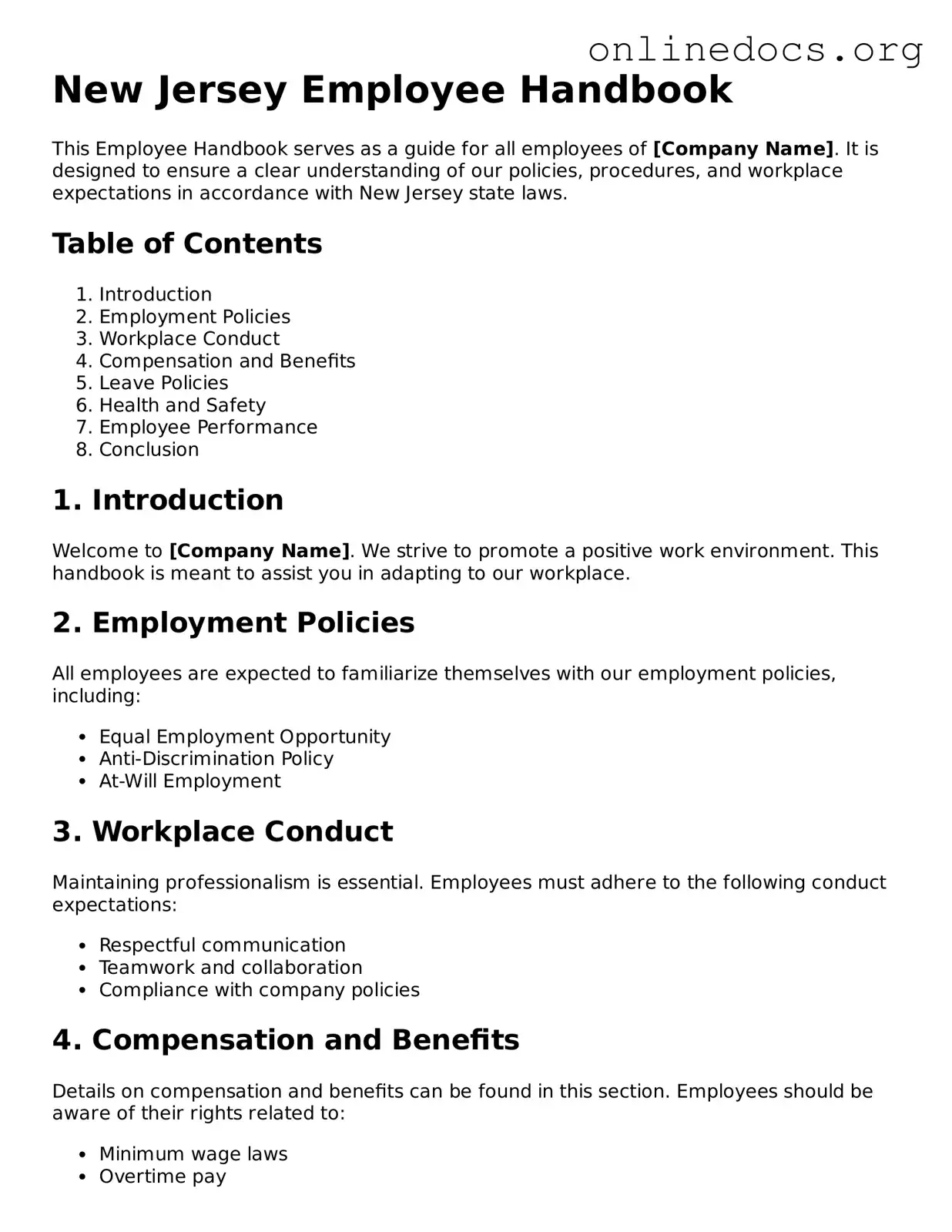The New Jersey Employee Handbook is similar to the Employee Policy Manual. Both documents serve as a guide for employees, outlining the expectations and responsibilities within the workplace. The Employee Policy Manual typically includes details about company policies, procedures, and employee rights. It helps ensure that employees understand the rules and regulations they must follow, fostering a positive work environment.
The New Jersey Employee Handbook provides critical insights into various aspects of employment, from workplace culture to compliance with regulations. By incorporating essential documents like the Employee Code of Conduct and the Safety Manual, it ensures that employees are well-informed of their rights and responsibilities. For additional guidance on developing effective handbooks, you can visit legalformspdf.com for valuable resources and templates.
Another comparable document is the Employee Orientation Guide. This guide is often provided to new hires during their onboarding process. Like the Employee Handbook, it introduces employees to the company's culture, values, and policies. The Orientation Guide focuses on helping new employees acclimate to their roles, making it an essential resource for fostering a smooth transition into the workplace.
The Workplace Safety Manual is also similar in purpose. This document outlines safety protocols and procedures that employees must follow to maintain a safe working environment. It emphasizes the importance of safety and health in the workplace, much like the Employee Handbook emphasizes employee rights and responsibilities. Both documents aim to create a supportive and secure atmosphere for all employees.
The Code of Conduct is another document that shares similarities with the Employee Handbook. It defines acceptable behaviors and outlines the consequences for misconduct. By establishing clear guidelines, the Code of Conduct helps maintain a respectful workplace. This document complements the Employee Handbook by providing additional clarity on the standards expected of employees.
Lastly, the Benefits Summary is akin to the Employee Handbook, as it provides essential information about the benefits available to employees. This document details health insurance, retirement plans, and other perks. Understanding these benefits is crucial for employees, just as understanding workplace policies is. Together, these documents empower employees to make informed decisions about their employment and well-being.
